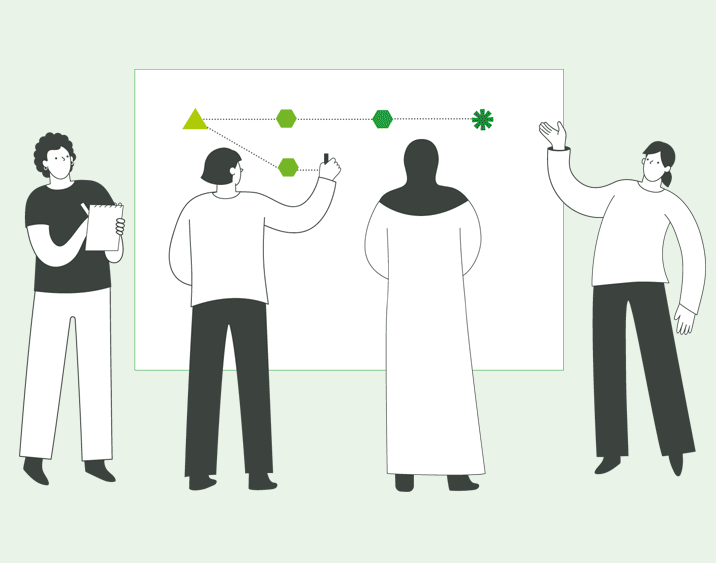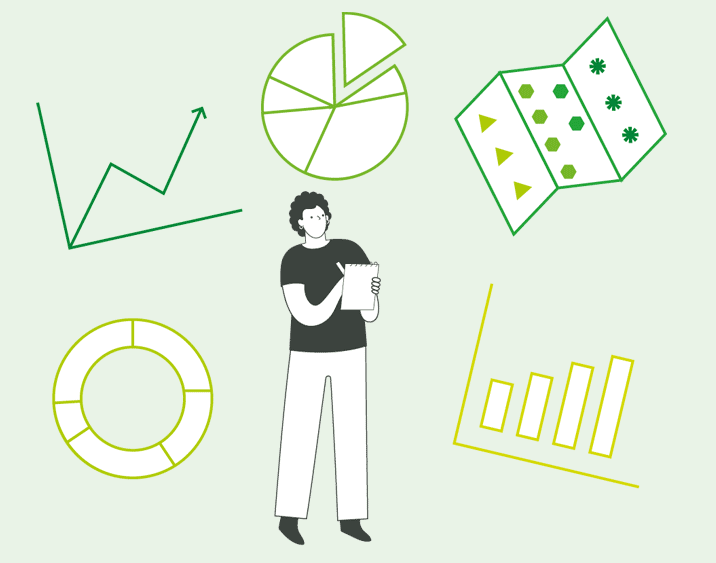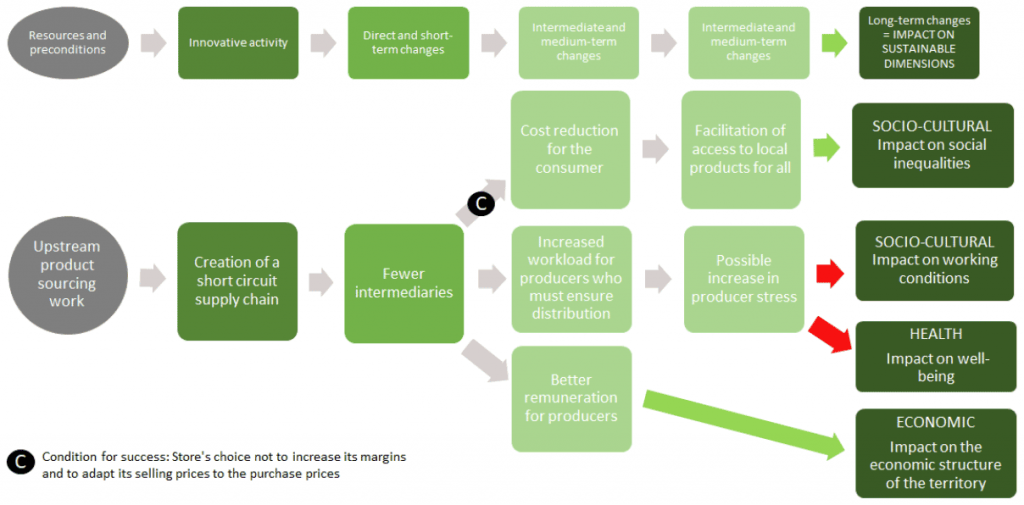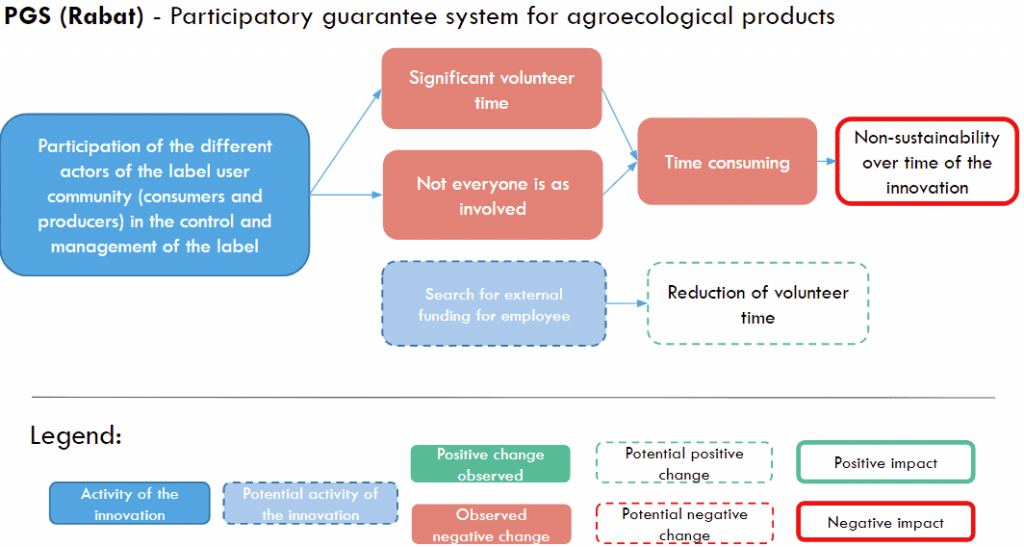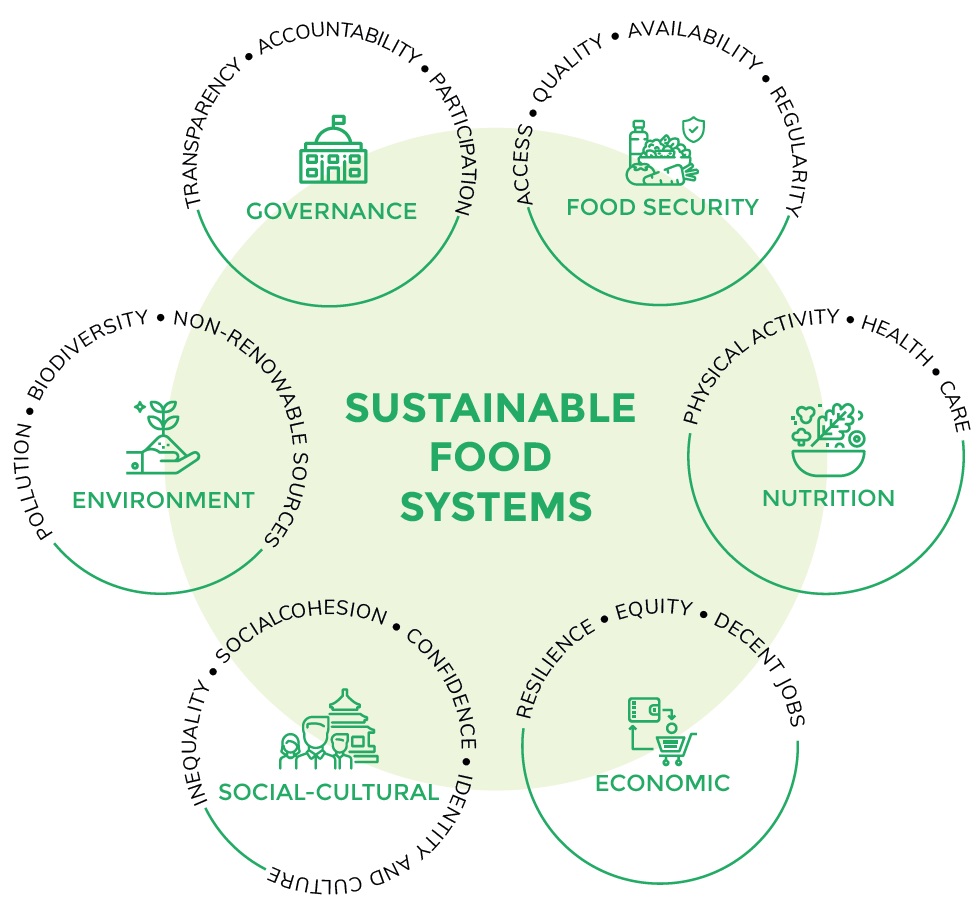Before you begin the workshop, establishing a clear understanding of the innovation’s key activities will help you map out the actual or potential short, medium, and long-term changes from the innovation.
Not all innovation activities are likely to create changes that contribute to food systems sustainability so it is important to select between 6 and 12 specific innovation activities to focus on. The interviews from Step 1 will help you identify the most relevant innovation activities to be discussed more in-depth during the workshop. You can organize the activities into a list, a map or any other format that you think is useful.
How to choose the activities you will map out during the workshop? Based on the list of innovation activities provided through Step 1, two questions need to be addressed to choose the appropriate activities:
1/ Which activities are the most innovative?
- Which activities are at the core of the innovation and stand out from others initiatives using new ideas, processes, practices, techniques, etc.?
- Which activities have been designed to achieve and/or inadvertently result in sustainability change?
2/ Which activities are more likely to make changes that will have an impact on sustainability?
You might also select some activities that especially matter to you, because you believe they are important, or because you think it is crucial to better understand the changes they have contributed to.
To name an activity, you need to be as specific as possible and find wording that relates to only one activity. For example: “Valorization of native corn” can be confusing and sounds more like a goal than a concrete action. A title such as “Purchasing native corn” is clearer.
There is a difference between the general innovation activities (what the innovation does) and innovative activities, that means activities that make a difference. When selecting the innovative activities you will map during the workshop, pay attention to :
- Activities that are at the heart of the mission of the innovation, and that make the innovation special with respect to sustainability goals or impacts.
- Actual activities, not general innovation objectives or goals.
For example, when selecting the meaningful activities of the cooperative supermarket la Cagette, the activity of “selling food” is not particularly special, and does not make la Cagette stand out from regular grocery stores. However, “selling food with a 23% fixed profit margin” is an innovation specific to La Cagette cooperative supermarket. This activity makes la Cagette special as it has potential consequences on prices, access to food, etc., and therefore would be a relevant innovative activity to select.
When selecting the innovative activities, make sure to define them precisely to better explain how they make a difference. For example, when talking about la Cagette’s innovative governance structure, the detail “we run the supermarket on a 1 person 1 vote governance” helps underscore the values that lead the action in addition to the action itself.
Conversely, the phrase “we want to give everyone access to sustainable food” does not explain how an objective is achieved and is a goal rather than an activity.






